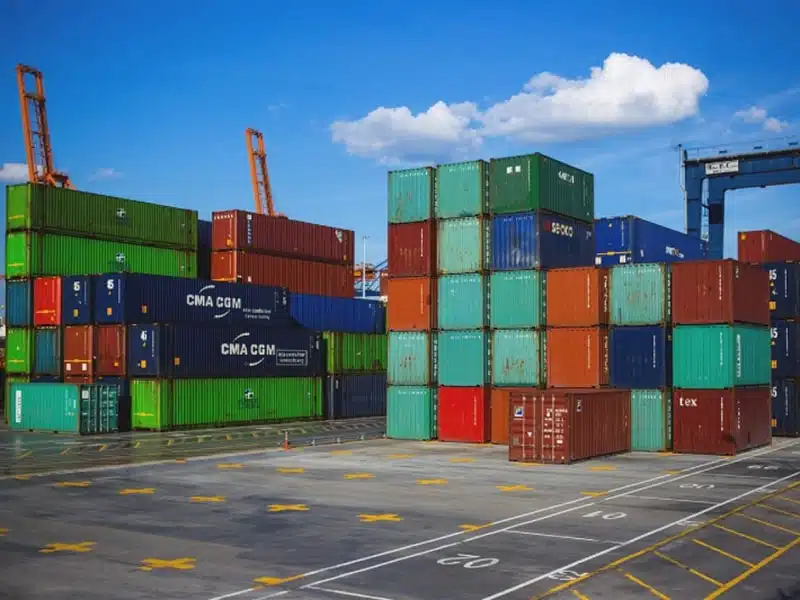
Shipping containers are the backbone of international trade, making it possible to move goods across continents efficiently and securely. When it comes to shipping containers to Iran, whether for commercial imports, personal belongings, or industrial equipment, there are several critical considerations that shippers must keep in mind. Iran, located strategically in the Middle East with access to major trade routes via the Persian Gulf, continues to be a growing market for exporters and freight forwarders alike.
In this article, we explore everything you need to know about shipping containers to Iran — from container types and documentation requirements to transit routes, regulations, and cost factors.
Why Ship Containers to Iran?
- Strategic Geographic Location
Iran’s unique position offers access to both Central Asian markets and the Persian Gulf, making it an ideal hub for regional distribution. Ports like Bandar Abbas and Chabahar are among the most active entry points for maritime cargo.
- Growing Demand for International Goods
Despite sanctions and economic fluctuations, Iran remains a significant importer of goods, particularly industrial machinery, raw materials, pharmaceuticals, electronics, and consumer goods.
- Diverse Importers
From manufacturing companies to wholesalers and e-commerce vendors, Iran has a wide range of importers that rely on containerized shipping.
Read more: Container Ships

Container Types for Iran-Bound Shipments
Depending on the nature of your cargo, selecting the right container is essential. The most commonly used container types for shipments to Iran include:
- 20ft Dry Containers: Ideal for small to medium shipments of general cargo.
- 40ft Dry Containers: Suitable for large shipments and bulk commodities.
- High Cube Containers: Provide additional vertical space, often used for light but voluminous cargo.
- Reefer Containers: Used for perishable goods like food and pharmaceuticals.
- Open Top or Flat Rack Containers: Suitable for oversized cargo such as heavy machinery.
Major Ports in Iran
Iran has several international seaports capable of receiving containerized cargo. The most notable ones include:
- Bandar Abbas: The busiest and most important container port in Iran, handling the majority of foreign trade.
- Chabahar Port: A developing port with increasing strategic and commercial significance.
- Bandar Imam Khomeini: Mainly used for bulk and industrial shipments but also supports container operations.
Read more: Container from Bandar Abbas

Shipping Routes to Iran
There are multiple maritime and multimodal shipping routes available:
- From Asia (e.g., China, India, UAE): Most shipments go via the Persian Gulf directly to Bandar Abbas.
- From Europe: Containers are often shipped through the Suez Canal and reach Iran through the Strait of Hormuz.
- From Turkey and Russia: Overland routes are sometimes used for faster transit or to bypass maritime congestion.
Contact us to inquire about shipping rates.
Key Documentation for Shipping to Iran
To ensure smooth customs clearance, the following documents are typically required:
- Commercial invoice
- Packing list
- Bill of lading (B/L)
- Certificate of origin
- Import license (where applicable)
- HS codes for product classification
- Special permits for restricted or sensitive items (e.g., medical equipment)
Customs Regulations and Compliance
Iranian customs procedures can be intricate due to international sanctions and national import laws. It is essential to:
- Confirm whether your goods are subject to sanctions or bans.
- Use a licensed and experienced local customs broker.
- Ensure that all documentation is translated and certified as needed.
- Pay applicable duties and taxes according to HS code classifications.
Working with a freight forwarder that has deep knowledge of Iranian import regulations is strongly recommended.
Transit Time Estimates
Transit times vary depending on the origin country and method of shipping:
- From China to Bandar Abbas: Approx. 20–30 days by sea
- From UAE to Bandar Abbas: 3–7 days by sea
- From Europe to Iran: 25–35 days by sea, or 10–15 days by road via Turkey
Delays can occur due to customs inspections, port congestion, or geopolitical developments, so it’s essential to plan ahead.
Cost Factors for Container Shipping to Iran
Shipping costs are influenced by several variables:
- Type and size of the container
- Origin port and distance
- Seasonal demand and fuel prices
- Special handling (e.g., refrigerated cargo)
- Local charges at Iranian ports (THC, customs fees, delivery charges)
To get an accurate quote, businesses should consult with freight forwarders who have direct experience with Iranian shipments. One such reliable provider is Lianvisman, known for its tailored logistics solutions and deep understanding of Iran-bound freight.
Tips for a Successful Container Shipment to Iran
- Book early: Especially during peak shipping seasons.
- Work with experienced partners: Choose freight forwarders with a proven track record in Iran logistics.
- Track your shipment: Use GPS or digital platforms to monitor container movements.
- Communicate proactively: Ensure your Iranian counterparts are informed and prepared for clearance and unloading.
Frequently Asked Questions (FAQs)
Can I ship personal items in a container to Iran?
Yes, it is possible to ship personal belongings to Iran, but you must clearly declare the contents and comply with Iranian customs regulations. Items may be subject to inspection and duties, so it’s important to work with a logistics provider that can guide you through the process.
Are there any items prohibited from entering Iran?
Yes, Iran restricts the import of certain goods including alcoholic beverages, certain media, firearms, and politically sensitive materials. Additionally, due to sanctions, some high-tech items and specific equipment may be restricted or require special clearance.
How do I choose between FCL and LCL shipping to Iran?
FCL (Full Container Load) is ideal if you have enough cargo to fill a container, while LCL (Less than Container Load) is suitable for smaller shipments. FCL offers more security and faster transit, while LCL is cost-effective for low-volume cargo.
Do I need an import license to ship a container to Iran?
In most cases, yes — especially for commercial shipments. The Iranian importer typically obtains the necessary license. It’s important to coordinate with your Iranian partner and ensure all legal requirements are met before shipping.


